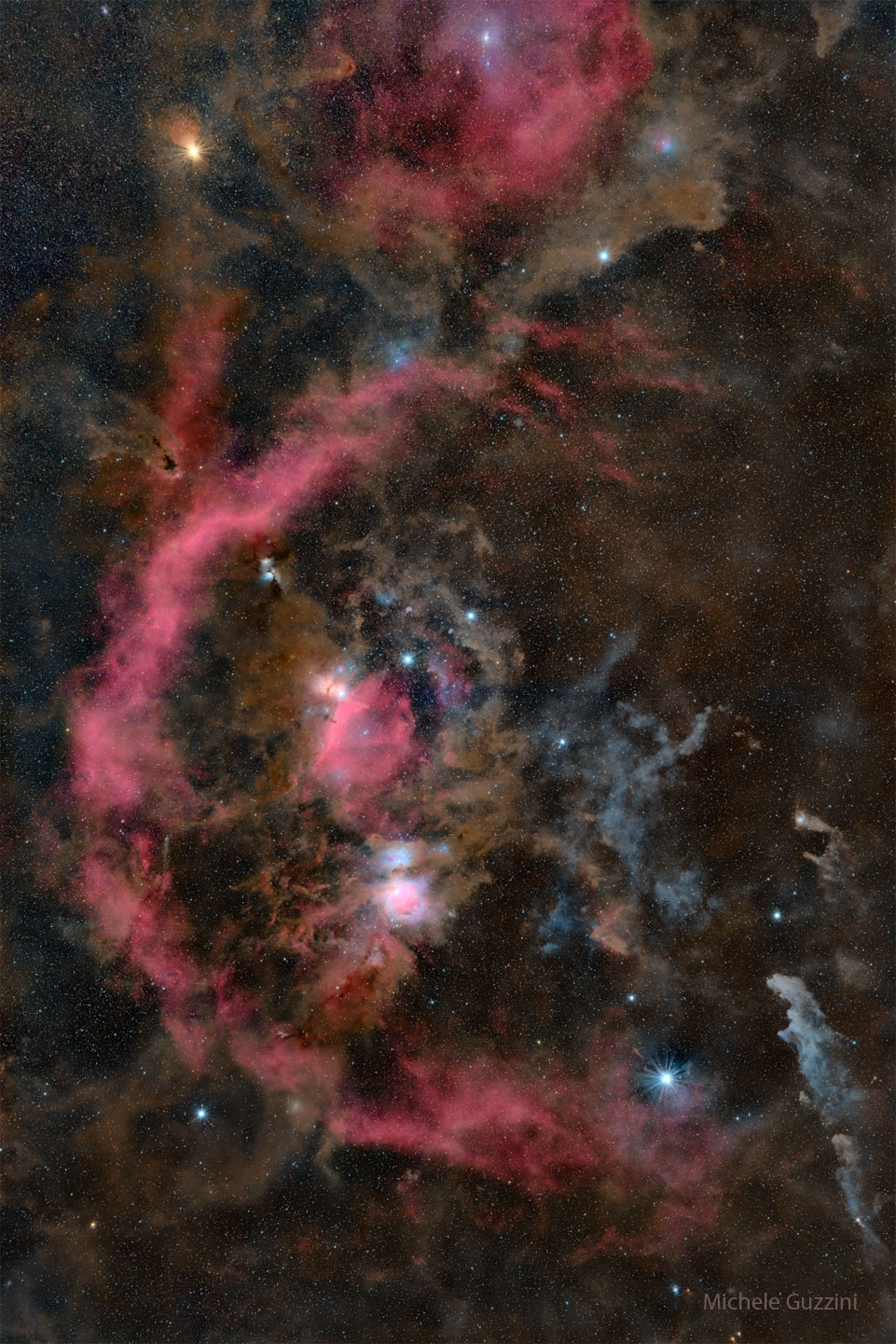안녕하세요, 히제입니다.
오늘 NASA에서 비춰주는 우주의 모습은 어떠할까요?
사진 먼저 감상하시죠!

이 사진의 제목은 The Orion You Can Almost See 입니다. NASA에서 제공한 공식 설명은 아래와 같습니다.
Do you recognize this constellation? Although it is one of the most recognizable star groupings on the sky, this is a more full Orion than you can see -- an Orion only revealed with long exposure digital camera imaging and post- processing. Here the cool red giant Betelgeuse takes on a strong orange tint as the brightest star on the upper left. Orion's hot blue stars are numerous, with supergiant Rigel balancing Betelgeuse on the lower right, and Bellatrix at the upper right. Lined up in Orion's belt are three stars all about 1,500 light-years away, born from the constellation's well-studied interstellar clouds. Just below Orion's belt is a bright but fuzzy patch that might also look familiar -- the stellar nursery known as Orion's Nebula. Finally, just barely visible to the unaided eye but quite striking here is Barnard's Loop -- a huge gaseous emission nebula surrounding Orion's Belt and Nebula discovered over 100 years ago by the pioneering Orion photographer E. E. Barnard.
우주 사진을 볼 때마다, 끝을 알 수 없는 저 광활한 우주 속에서 우리 사람이란 존재가 얼마나 작은 부분인가 실감하게 됩니다.
그럼 저는 내일 또 새로운 우주 사진과 함께 돌아오겠습니다:-) 좋은 하루 되세요!
'우주 사진' 카테고리의 다른 글
| 오늘의 NASA 우주 사진 (2024-01-18) (0) | 2024.01.18 |
|---|---|
| 오늘의 NASA 우주 사진 (2024-01-17) (0) | 2024.01.17 |
| 오늘의 NASA 우주 사진 (2024-01-15) (0) | 2024.01.15 |
| 오늘의 NASA 우주 사진 (2024-01-14) (0) | 2024.01.14 |
| 오늘의 NASA 우주 사진 (2024-01-13) (0) | 2024.01.13 |
댓글